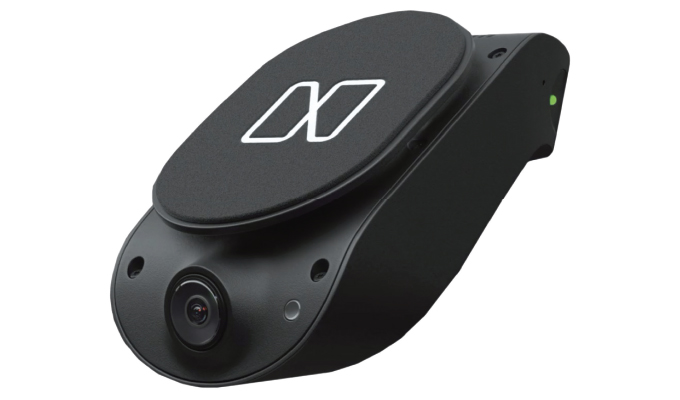Last month’s issue included part 1 of this article. Part 1 introduced the Nauto safety system, which includes a device that installs on a work vehicle windshield that uses computer vision to detect what’s happening on the road and inside the cabin to determine risks. If the device does detect a risk or poor driver behavior, it will audibly alert the driver and give them the chance to correct the behavior.
While the device uses computer vision to detect risks and inform the driver, the device also gives fleet owners the option to video record safety events both on the road and inside the cab. This option helps both the fleet and the driver because if an accident does happen, video proof exonerates good drivers when the collision wasn’t their fault. However, in-cab video capture is enough to make any driver feel their privacy is invaded. But with Nauto, drivers can feel more comfortable.
Last month’s article ended with Nauto’s ability to honor driver privacy, and this article will continue explaining what triggers the camera to record, how context plays a big role with the safety system, how Nauto helps with driver coaching, and other benefits.
WHAT’S RECORDED
In respect to the driver’s privacy and the fleet manager’s time, the Nauto camera doesn’t continuously record—and as stated in part 1 of this article, the fleet manager must explicitly request for video capture, regardless. In fact, what triggers the recording is actually dependent upon what the fleet manager is most concerned about. The computer vision picks up on these events and then begins to capture those seconds of driving.
These AI-captured events can include following too closely, running a stop sign, being drowsy, etc. And in some instances, the camera system won’t even trigger until it receives permission to record from the fleet manager or dispatch, such as when the AI detects yawning or other signs of fatigue. Video capture can even take place outside the vehicle, such as when a vehicle enters a secure area or when a fleet manager wants to monitor tools and equipment from theft.
CONSIDER CONTEXT
Another aspect of Nauto that drivers can appreciate is the fact that the system takes context into account. Stefan Heck, Nauto founder and CEO, uses the example of cell phone use in the state of California.
In California, it’s against the law for drivers to use their cell phone even when at a red light; however, just because it’s against the law, that doesn’t mean Nauto will consider that action to be poor driver behavior simply because the safety risk of phone use at a red light is extremely low. “We’re not here to try to enforce the law,” Heck explains. “We’re here to detect safety risks.”
Other low-risk actions the system doesn’t alert drivers about are things like adjusting the radio, checking a map, or other interactions that take the drivers’ eyes off the road for less than two seconds. The system also doesn’t alert drivers or fleet managers if a driver travels slightly above the speed limit. In fact, Heck explains that it’s safer to drive along with the flow of traffic rather than drive strictly according to the speed limit in some cases. However, if the driver is speeding and tailgating simultaneously, then that would be flagged as a safety risk.
COACHING HELP
Perhaps the best part of Nauto is that, in many cases, the fleet manager doesn’t have to be involved in driver coaching. This means no sifting through countless hours of footage, no endless note-taking, and no taking time away from the manager’s or driver’s busy schedules to make time for a one-on-one coaching session.
Heck says only about 10 to 15% of drivers using Nauto will ever need a coaching session because of the system’s ability to allow drivers to self-improve by simply alerting drivers of their mistakes. Generally, fleets will see improvement from their drivers within a week and see most drivers scoring in the 90s (on a scale from 1 to 100) within a few months—all without manager coaching. In cases when a driver does not improve, then the fleet manager can step in and assess the problem for issues that computer vision can’t detect: Perhaps the driver can’t see well at night and needs glasses, or perhaps the driver isn’t sleeping well at night due to a new baby at home.
If a driver does need coaching, the Nauto manager dashboard provides detailed information and suggestions about what area the driver needs coaching.
OTHER BENEFITS
Nauto detects poor driving behaviors, and it also detects collisions immediately—even minor ones. This is a plus for: the fleet, because the manager can assess damage to the vehicle once it pulls back into the yard; the driver, because once dispatch learns of a collision, they can call for emergency assistance; and the other motorist or pedestrian involved in the accident, because immediate help means less chances of a permanent injury.
Another benefit of Nauto versus other systems is its simple implementation. Using Nauto requires the installation of one small, single device on the windshield of the vehicle. And managers can install the Nauto dashboard straight onto their desktop, laptop, or tablet.
Over 800 fleets across the US, Canada, the United Kingdom, and Japan are already using Nauto, and the success stories are aplenty. Among those 800 fleets are those in delivery, utilities, oil and gas, pest control, passenger fleets, rideshare, and more—any driver and any fleet can benefit from Nauto.
FOR MORE INFORMATION
Find out more about Nauto, visit www.nauto.com.




